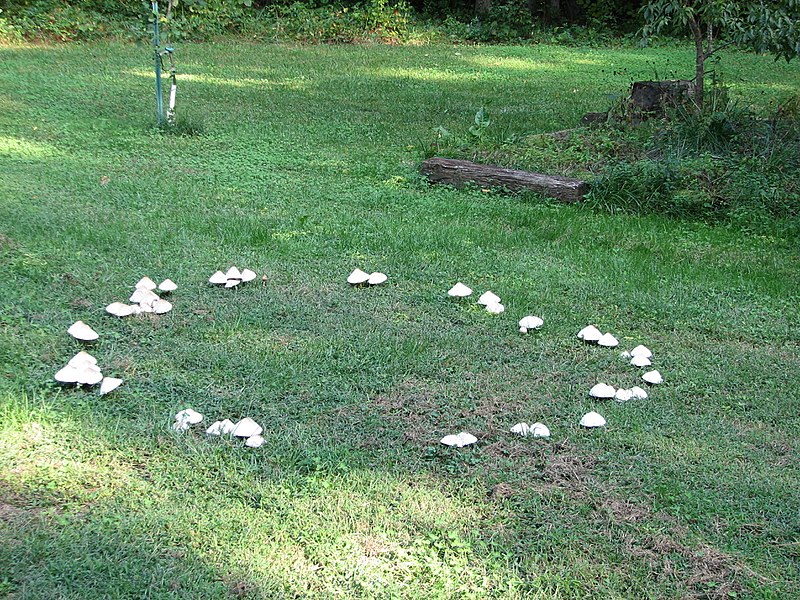 |
| Image by CandaceHunter |
They note that a good specimen contains all parts of the fungus - cap, spore bearing gills or other tissues, the complete stipe (stem) and any other distinguishing features. "Rotting, maggot-infested, water-soaked, mould or algae-covered, or withered specimens should be avoided." You may scoff (as if you'd submit such things), but bear it in mind.
It's also good to be aware of legal precedents around collecting fungi: the situation is a little muddled in this country but foraging for mushrooms is permitted as long as you don't sell them on. As I have said elsewhere, technically it is always best to get permission for collecting, and this applies firmly if you are intending to visit protected areas. But realistically, you'll only be taking a specimen here and there, and for Science, so you shouldn't encounter any problems in most locations.
There are many places you can look - meadows, woods, damp fields near streams, on trees (alive and dead). There are even species that grow on other mushrooms! You may find that when you arrive you can't see any... but once you've got your eye in, you'll see them everywhere.
 | ||
| A fairy ring, probably of Marasmius oreades. Is safety in fairy rings on your risk assessment? If you hear strange music, run for it. Image by Aviddoghug. |
The main consideration when collecting is keeping your specimens undamaged and keeping track of which you've found where. You don't want to keep fungi in plastic bags or they will deteriorate rapidly. Paper bags are much better - you can pack the fungi individually and write location information on them.
You might want to try labelling with jeweller's tags, but they won't be easy to tie on every form of fungus. Perhaps you'll choose to photograph the specimen in situ - that will also remind you to make a note of the substrate at the site.
And what to carry your collection home in when you don't want it crushed? If you don't mind looking like Red Riding Hood you can use an open wicker basket - it provides excellent ventilation and is traditional and rustic. But if that's not really your style, you just need something sturdy - perhaps a box or two within your rucksack, or even just a bucket.
When you come to pick them, a few species have distinctive features right at the base which you should try to keep intact. Some mycologists would just pick by hand, others use a knife or trowel. (Which reminds me - remember that some species are poisonous, and you probably won't know which they are at the time - so remember to wash your hands before you start on your sandwiches.)
 |
| from the Opinel site |
You might see a Keen Mycologist from the university wielding his specialist 'mushroom knife' which incorporates a brush at the opposite end to the blade. You might not want to go so far just yet (they're quite a lot of money for a curved knife), but taking an ordinary paintbrush can help clean dirt off your specimens - it stops bits falling into the gills or sticking to slimey caps on the way home.
Bracket fungi and others on substrates like trees and wood might need more persuasion - employ extreme caution if you're using a knife or saw, always cutting away from yourself. Beyond the safety issues there are legal issues of carrying a knife. Common sense says you are carrying and using it for legitimate reasons, for work. But if someone sees you waving a blade around and gets the wrong end of the stick... Just be aware that laws exist. There is official information on the gov.uk website and various bushcraft sites offer advice from experience. Besides, if you get collecting early enough, you'll have plenty of choice without having to even consider hacking specimens off trees!
 |
| 17th century woodcut |
Read on for information about identification
or about preservation techniques.

No comments :
Post a Comment